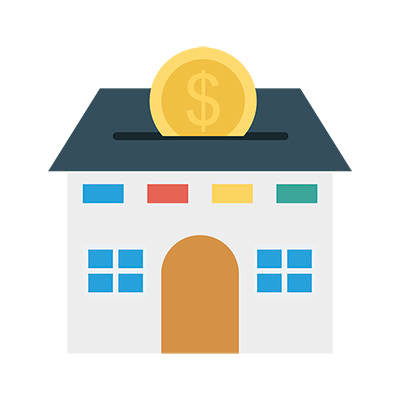Tax Incentives
The current tax code can significantly impact a building owner’s bottom line and the future performance of their commercial property.
Due to recent changes in the tax code, commercial building owner's can reap many tax benefits on qualifying building improvements. While there are many qualifying categories, we are going to outline the tax savings when it comes to replacing your commercial roof and/or energy efficient solar roof.
Recent changes to the tax code (in brief):
The Coronavirus Aid, Relief and Economic Security (CARES) Act, which passed earlier in 2020, offers retroactive tax relief for business owners, by allowing a five-year carryback for a business Net Operating Loss (NOL) that arises in a tax year beginning in 2018 through 2020. This carryback period can be extremely lucrative seen income tax rates were higher in prior years.
The Coronavirus Aid, Relief and Economic Security (CARES) Act, includes a retroactive correction to the Tax Cuts and Jobs Act (TCJA), allowing Qualified Improvement Property (QIP) 100% first-year bonus depreciation for QIP that’s placed in service in 2018 through 2022. The TCJA also expanded the definition of qualified real property to include qualified improvement property and some improvements to nonresidential real property, such as roofs; heating, ventilation and air-conditioning equipment; fire protection and alarm systems; and security systems.
Changes to Section 179 allow most short-term capital expenditures to be considered for a full tax write-off for the same tax year that the investments were made. The previous tax codes required large capital outputs to be depreciated per IRS timetables, typically over the course of 39 years. Given that roofs typically deliver 15 to 25 year service lives, that 39 year timetable has historically hurt the building owner’s ability to fully deduct the roof asset. This means, commercial building improvements can now be written off in a lump-sum entirety in the same tax year; that is, 100 percent of the asset cost can be written off in year one.
Late in 2019, Congress approved and President Trump signed a $1.4 trillion dollar spending package that includes retroactive extensions of Section 179D tax deduction for projects put in service from Jan. 1, 2018 to Dec. 31, 2020. (Yes, it expires this year. And yes, you can apply for Section 179D deductions retroactively.) Section 179D allows building owners to claim a tax deduction of up to $1.80 per square foot for installing qualifying energy saving systems in buildings. The Office of Energy Efficiency and Renewable Energy has specific software to be used to calculate these savings in order to have them qualify.
**DISCLAIMER: As in all tax matters, the taxpayer is advised to consult their tax professional to assess how these changes in tax code could be relevant and/or beneficial to your business. Sun Coast Roofing & Solar assumes no liability regarding the possible tax savings noted above.

